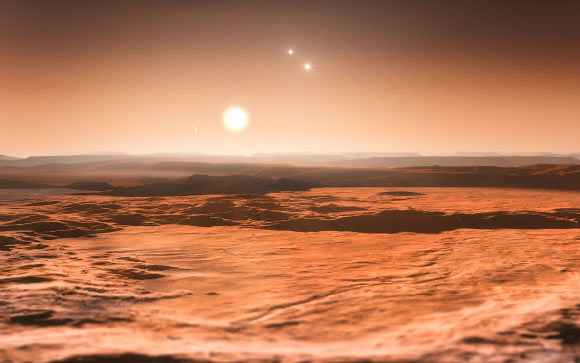A couple of days ago, I posted an excerpt from Five Billion Years of Solitude, the first book by science journalist and exoplanet enthusiast Lee Billings. In “War of the Worlds,” his new Wired piece, the writer details the internecine struggle between two groups of astronomers to lay claim to the discovery of the very first Earth-esque planet beyond our solar system (a topic also covered in Solitude). The opening:
“NO ONE KNOWS what the planet Gliese 667Cc looks like. We know that it is about 22 light-years from Earth, a journey of lifetimes upon lifetimes. But no one can say whether it is a world like ours, with oceans and life, cities and single-malt Scotch. Only a hint of a to-and-fro oscillation in the star it orbits, detectable by Earth’s most sensitive telescopes and spectrographs, lets astronomers say the planet exists at all. The planet is bigger than our world, perhaps made of rocks instead of gas, and within its star’s ‘habitable zone’—at a Goldilocks distance that ensures enough starlight to make liquid water possible but not so much as to nuke the planet clean.
That’s enough to fill the scientists who hunt for worlds outside our own solar system—so-called exoplanets—with wonder. Gliese 667Cc is, if not a sibling to our world, at least a cousin out there amid the stars. No one knows if it is a place we humans could someday live, breathe, and watch triple sunsets. No one knows whether barely imagined natives are right now pointing their most sensitive and far-seeing technology at Earth, wondering the same things. Yet regardless, to be the person who found Gliese 667Cc is to be the person who changes the quest for life beyond our world, to be remembered as long as humans exist to remember—by the light of the sun or a distant, unknown star.
Which is a problem. Because another thing no one knows about Gliese 667Cc is who should get credit for discovering it.”
Tags: Lee Billings

